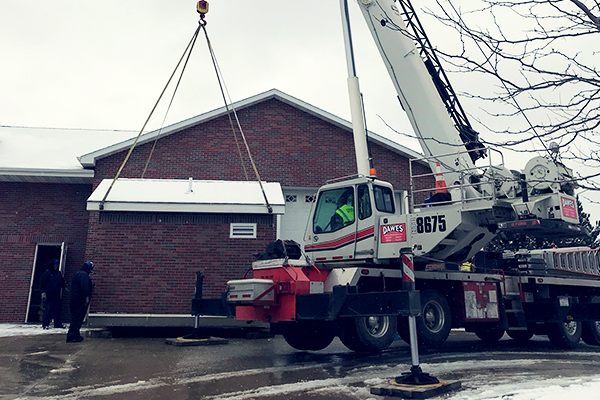 In early January 2019, Waukesha Water Utility (WWU) temporarily shut down its largest well, number 10, for repairs. WWU was able to avoid any negative impacts to water service and quality.
In early January 2019, Waukesha Water Utility (WWU) temporarily shut down its largest well, number 10, for repairs. WWU was able to avoid any negative impacts to water service and quality.
WWU General Manager Daniel Duchniak said, “I am confident we will continue to meet our community’s water needs and quality while the well is being repaired. We have extensive plans in place to manage repairs until the new water supply is completed.”
The recent well failure shows the need for WWU to stay on schedule for our switch to Lake Michigan water in 2023. Pump failures and repairs with the current groundwater system are a continuing challenge for the Utility.
A temporary well and motor were installed in January that will deliver half of Well 10’s regular capacity while the well is repaired over the next six months. Other wells will be used as necessary to cover the additional capacity needed. WWU took these steps to continue effectively and efficiently managing the water supply before a sustainable alternative is built and completed by 2023.
Well 10 is among the largest submersible pumps in the world. It is pumping water from over 800 feet below the surface, providing 3.8 million gallons of water per day. Waukesha’s average water use is about 6 million gallons per day, but demand fluctuates with the seasons.
“Our staff is working diligently to meet the needs of the city. But, we have said for years – and regulators from 10 states and provinces have agreed – that our current groundwater system is not reliable or sustainable for the long term. The switch to Lake Michigan water will ensure we have safe and reliable drinking water for generations to come,” Duchniak said.
Waukesha is switching to Lake Michigan water due to the drawdown of its groundwater supply and the presence of naturally-occurring radium in the deep aquifer. The utility has six active wells that can meet temporary standards for radium. Four other wells are not regularly used due to radium problems.
These types of pumps generally last five years, but because of high usage are lasting only about two to three years. Since 2007, WWU has experienced an average of one pump failure per year. Each failure costs between $150,000 and $300,000 to repair. With the latest problems, repair costs for all the wells will total about $2.5 million for that 11-year period. The switch to piped Lake Michigan water will ensure such well failures no longer impact our city.